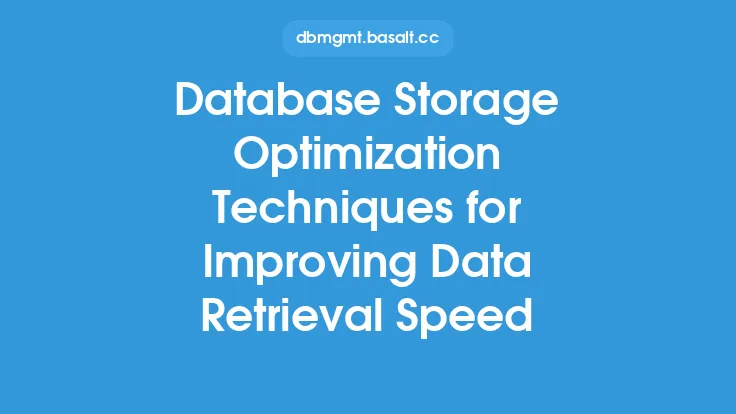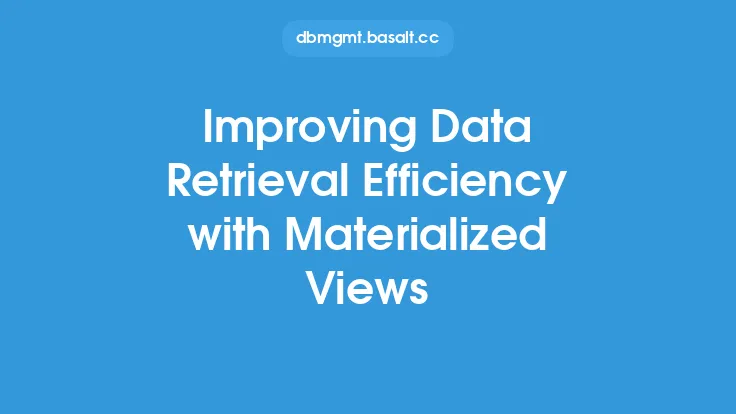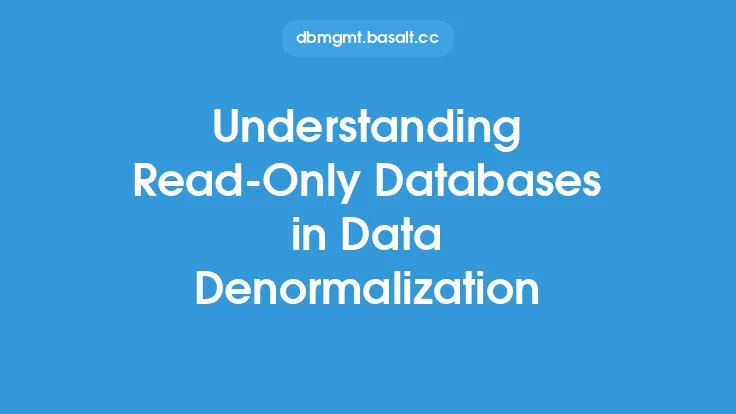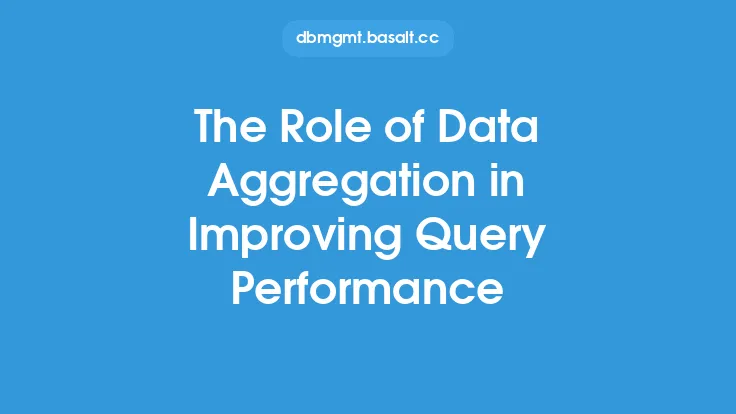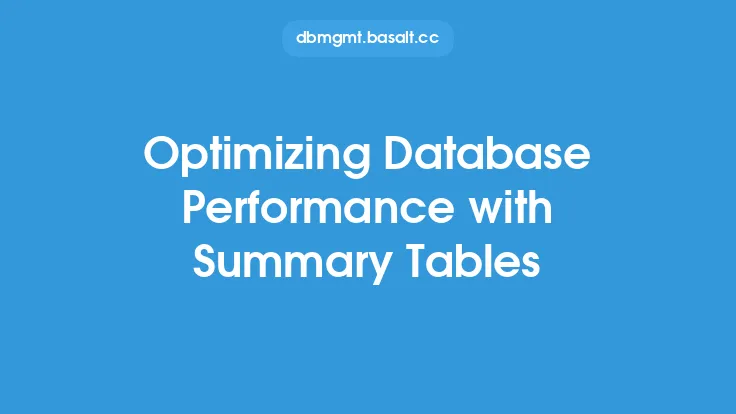Improving data access speed is a crucial aspect of database management, as it directly impacts the performance and efficiency of applications and services that rely on data retrieval. One effective method to achieve this is through denormalization, which involves intentionally deviating from the principles of database normalization to improve data access speed. Denormalization methods have been widely adopted in various database systems, and their application can significantly enhance data retrieval efficiency.
Introduction to Denormalization
Denormalization is a database design technique that involves storing data in a way that reduces the need for joins and other complex queries, thereby improving data access speed. In a normalized database, data is organized into separate tables to minimize data redundancy and improve data integrity. However, this can lead to slower query performance, as the database needs to perform joins and other operations to retrieve related data. Denormalization addresses this issue by storing related data in a single table or reducing the number of joins required to retrieve data.
Types of Denormalization
There are several types of denormalization methods, each with its own strengths and weaknesses. Some common types of denormalization include:
- Pre-aggregation: This involves pre-calculating and storing aggregated values, such as sums or averages, to reduce the need for complex calculations during query execution.
- Pre-joining: This involves storing related data in a single table to reduce the need for joins during query execution.
- Data duplication: This involves storing duplicate data in multiple tables to reduce the need for joins and improve data access speed.
- Data caching: This involves storing frequently accessed data in a cache to reduce the need for disk I/O and improve data access speed.
Denormalization Techniques
Several denormalization techniques can be applied to improve data access speed. Some common techniques include:
- Using materialized views: Materialized views are pre-computed and stored results of complex queries, which can be used to improve query performance.
- Using indexed views: Indexed views are similar to materialized views but are updated in real-time, providing improved query performance and data freshness.
- Using summary tables: Summary tables are used to store aggregated values, such as sums or averages, to reduce the need for complex calculations during query execution.
- Using data warehousing: Data warehousing involves storing data in a separate database optimized for querying and analysis, which can improve data access speed and reduce the load on the main database.
Benefits of Denormalization
Denormalization offers several benefits, including:
- Improved data access speed: Denormalization can significantly improve data access speed by reducing the need for joins and other complex queries.
- Improved query performance: Denormalization can improve query performance by reducing the number of operations required to retrieve data.
- Reduced disk I/O: Denormalization can reduce disk I/O by storing frequently accessed data in a cache or reducing the need for disk access during query execution.
- Improved scalability: Denormalization can improve scalability by reducing the load on the database and improving data access speed.
Challenges and Limitations of Denormalization
While denormalization offers several benefits, it also presents several challenges and limitations. Some common challenges and limitations include:
- Data inconsistency: Denormalization can lead to data inconsistency, as duplicate data may become outdated or incorrect.
- Data redundancy: Denormalization can lead to data redundancy, as duplicate data is stored in multiple tables.
- Increased storage requirements: Denormalization can increase storage requirements, as duplicate data is stored in multiple tables.
- Complexity: Denormalization can add complexity to the database design, making it more difficult to maintain and manage.
Best Practices for Denormalization
To ensure effective denormalization, several best practices should be followed. Some common best practices include:
- Identify performance bottlenecks: Identify performance bottlenecks in the database and apply denormalization techniques to address these issues.
- Use denormalization judiciously: Use denormalization judiciously, as it can lead to data inconsistency and redundancy.
- Monitor data consistency: Monitor data consistency and take steps to ensure that duplicate data remains up-to-date and accurate.
- Optimize storage: Optimize storage requirements by using efficient data storage techniques, such as compression and indexing.
Conclusion
Denormalization is a powerful technique for improving data access speed and query performance. By applying denormalization methods and techniques, database administrators can significantly enhance the efficiency and performance of their databases. However, denormalization also presents several challenges and limitations, and best practices should be followed to ensure effective denormalization. By understanding the benefits and limitations of denormalization, database administrators can make informed decisions about when and how to apply denormalization techniques to improve data access speed and query performance.
